For your test you need to study:
Vocabulary and grammar on page 43 Pupil's Book and page 24 Workbook. present simple passive.
-ed and -ing adjectives (page 44 PB, WB p. 25)
adjectives with -ful (PB p. 45, WB p. 26)
adverbs with -ly, -ily (WB p. 27)
lunes, 30 de noviembre de 2015
domingo, 29 de noviembre de 2015
What are the effects of thermal energy?
Thermal energy can have different effects.
It can change a solid to a liquid: Melting.

It can change a liquid to a gas: Evaporation.


And going back to our lesson on how heat travels: one more example of convection currents: warm air rises!
It can change a solid to a liquid: Melting.
It can change a liquid to a gas: Evaporation.
Thermal
energy can cause chemical changes.
These changes are permanent, so they cannot be reversed.
These changes are permanent, so they cannot be reversed.
Also, thermal
energy causes molecules to vibrate. As a result, the material expands. (Expansion.)
Watch this video to see an example of expansion.
And going back to our lesson on how heat travels: one more example of convection currents: warm air rises!
viernes, 27 de noviembre de 2015
-ed and -ing adjectives
Remember, "-ed" adjectives tell us about how someone feels. "-ing" objects describe something.
Can you complete these sentences?
I am fascinated by....
......................... is really boring!
He is interested in.......
I find ..............fascinating.
She was bored by.................
Why don't you find.............. interesting?
................................was really exciting!
Are you excited about.....?
Try this game:
More games on this page.
And a quiz.
I hope you find these games interesting! Hopefully you will not be bored!
jueves, 26 de noviembre de 2015
Happy Thanksgiving!!!!
Cornucopia: a symbol of abundance
Thanksgiving is a time to be thankful for all that we have.
What are you thankful for?
Social Science test Unit 3
Our Unit 3 test will be on Tuesday. You need to study pages 32-38. You should be able to explain the concepts in the book, the words in pink or purple letters, things like "brain drain", "rural exodus", etc. Also, you should understand and be able to answer questions like the ones from the book that we have corrected in class.
The students from class 5ºB should bring their Social Science books and notebooks on Monday to work on after the trip to MAPFRE.
The students from class 5ºB should bring their Social Science books and notebooks on Monday to work on after the trip to MAPFRE.
viernes, 20 de noviembre de 2015
Artist or engineer?
Here is an advertisement that features Theo Jansen, the sculptor we are going to see.
He says:
"My name is Theo Jansen. I’m a kinetic sculptor. My sculptures are made of very light materials, and they are powered by the wind. Part of me is an engineer who wants to map the progress of mobility. Another part is an artist who wants to sculpt the air that surrounds us and give it shape. And always I strive to push the boundaries of what we know, and what seems possible to us at this moment in time. The walls between art and engineering exist only in our minds."
Spanish architect Santiago Calatrava designs bridges and other structures in an artistic way. This bridge in Calgary, Canada, was designed by him. First it was called the Calatrava bridge, but then the name was changed to the Peace Bridge. Can you recognize any of the machines in the beginning? Diggers, bulldozers, cranes...


He has also designed bridges in Bilbao:

Seville:

and this city of Arts and Sciences, which was built in the bed of the River Turia in Valencia.

So, are they artists or engineers? Or, perhaps we can say that they are both!
He says:
"My name is Theo Jansen. I’m a kinetic sculptor. My sculptures are made of very light materials, and they are powered by the wind. Part of me is an engineer who wants to map the progress of mobility. Another part is an artist who wants to sculpt the air that surrounds us and give it shape. And always I strive to push the boundaries of what we know, and what seems possible to us at this moment in time. The walls between art and engineering exist only in our minds."
Spanish architect Santiago Calatrava designs bridges and other structures in an artistic way. This bridge in Calgary, Canada, was designed by him. First it was called the Calatrava bridge, but then the name was changed to the Peace Bridge. Can you recognize any of the machines in the beginning? Diggers, bulldozers, cranes...
He has also designed bridges in Bilbao:
Seville:

and this city of Arts and Sciences, which was built in the bed of the River Turia in Valencia.

So, are they artists or engineers? Or, perhaps we can say that they are both!
martes, 17 de noviembre de 2015
Upcoming tests
The upcoming tests will be:
Tuesday, 1 December: Unit 3 Social Science.
For this test you do not have to study pages 40-41 about Europe's population. We will work on that topic with some different activities after the exam.
Thursday, 3 December: Unit 3 English Test.
Later I will tell you what you have to study for this.
Monday, 9 December: Natural Science "Heat and Light."
Other upcoming assignments:
--For Wednesday: The Natural Science notebook page about Conduction, Radiation, and Convection. Some of you have shown it to me already-- they look good!
--After you work with Yvonne on your writing from the workbook, you have to make the corrections and copy it into your notebook. This is for Friday (5ºA) and Monday (5ºB).
viernes, 13 de noviembre de 2015
Value scales
Watch this video about how to use line to create different values. The squares with the highest density have the darkest value!
We can use value to create the illusion of 3D.

When something is in 3D, we say it has form.

We can use value to create the illusion of 3D.
When something is in 3D, we say it has form.
The ones on the top have only shape. The ones on the bottom have form.
jueves, 12 de noviembre de 2015
Population growth and density
2011 Census
Spain: pop. 47,190,494
Birth rate: 472,000
Mortality rate:
388,000
Immigrants: 457,000
Emigrants: 580,000
How many
people died (per 1000)?
How
many people left Spain to live in another country?
How
many people came to Spain from another country?
How many
babies were born (per 1000)?
Natural growth = birth rate- mortality rate
2011 census:
Birth rate: 472,000
Mortality rate:
388,000
The birthrate is
higher, so there was positive natural growth.
But, we must also look
at immigration and emigration to know if the total population increased or
decreased.
How is the population distributed?
How is the population distributed?

Questions:
Which areas are most/least populated? Why?
Which areas are most/least populated? Why?
How
do we calculate population density?
What
is rural exodus?
Fun with convection currents!
Watch this experiment:
Warm water rises, cold water sinks.
Warm air rises, cold air sinks.
This is called CONVECTION.
Watch some convection currents in action:
One more experiment!
Warm water rises, cold water sinks.
Warm air rises, cold air sinks.
This is called CONVECTION.
Watch some convection currents in action:
One more experiment!
miércoles, 11 de noviembre de 2015
Heat transfer
Heat Energy can be transferred from one object to another in different ways.
When two objects are in contact, thermal energy is transferred from the hotter object to the colder object. This is called CONDUCTION. The molecules in the hotter object are moving faster, and they transfer their energy to the molecules in the colder object.
But, what is a molecule?
Molecules are the smallest part of any substance. They are made up of two or more atoms linked together. Here is a water molecule. It has two atoms of Hydrogen and one atom of Oxygen.
Thermal energy travels through a gas or liquid by CONVECTION.
Thermal energy can be transferred through space by electromagnetic waves. This is called RADIATION.
Here is a presentation:
Here is a presentation:
martes, 10 de noviembre de 2015
Population counters
Did you know that the world population is now over 7 billion? In English, that means 7,000,000,000!
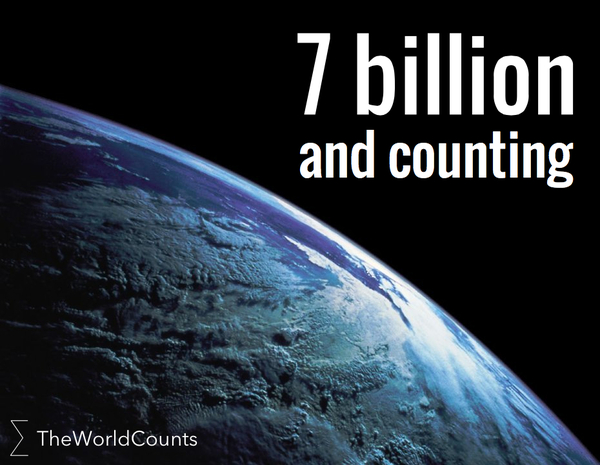
But what does that mean? Watch this video for perspective.
How did we get so big so fast?
Here we can watch in real time how populations increase and decrease:
US and World population counter
Breathing Earth
Spain's population
What do you think the future will be like with so many people????

But what does that mean? Watch this video for perspective.
How did we get so big so fast?
Here we can watch in real time how populations increase and decrease:
US and World population counter
Breathing Earth
Spain's population
What do you think the future will be like with so many people????
domingo, 8 de noviembre de 2015
English test Unit 2
We have the test for Unit 2 on Wednesday.
You have to study:
--The vocabulary from the text (the words from Pupil's Book page 32 and workbook page 13)
--Words with soft "ch" (like chocolate, chicken. lunch) and hard "ch" (k sound) like: chemical, school, anchor. You need to know which words belong in each category.
Grammar:
The main grammar points from this unit are:
Infinitive of purpose. We use the infinitive form (with "to" to explain why we do something.)
I went to the shops to buy a new dress.
She phoned her classmate to ask about the homework.
Have to for obligation in present, past, and future.
Click here for a quick review.
You also need to review the grammar from last unit:
While + past continuous, interrupted by past simple.

Used to for things that were true in the past but are not true now. Remember the form:
I used to have a dog, but now I have a cat.
Also, be careful!!! This time, I will take off points for errors in present simple (do/does, 3rd person "s", etc.)
You have to study:
--The vocabulary from the text (the words from Pupil's Book page 32 and workbook page 13)
--Words with soft "ch" (like chocolate, chicken. lunch) and hard "ch" (k sound) like: chemical, school, anchor. You need to know which words belong in each category.
Grammar:
The main grammar points from this unit are:
Infinitive of purpose. We use the infinitive form (with "to" to explain why we do something.)
I went to the shops to buy a new dress.
She phoned her classmate to ask about the homework.
Have to for obligation in present, past, and future.
Click here for a quick review.
You also need to review the grammar from last unit:
While + past continuous, interrupted by past simple.
Used to for things that were true in the past but are not true now. Remember the form:
I used to have a dog, but now I have a cat.
Also, be careful!!! This time, I will take off points for errors in present simple (do/does, 3rd person "s", etc.)
Thanksgiving song
On November 26th (the 4th Thursday in November) people in the United States celebrate Thanksgiving. We are also going to celebrate at school, but this year instead of sharing food, we are going to share songs! Here is the song we are going to sing in 5th grade:
viernes, 6 de noviembre de 2015
Palaeolithic Thaumatropes, Moving images... and a surprise!
Last week we saw some examples of thaumatropes, and how they were popular in 19th century Britain. But did you know that prehistoric people made their own thaumatropes and even had early cinema? This article explains, and you can watch the animation.

Now we have new ways of making moving images. Check out these animated GIFs by David Szakaly:


And the surprise! Would you like to meet these creatures?????
On November 20th (5ºB) and November 24th (5ºA) we are going to see them in Madrid!
Now we have new ways of making moving images. Check out these animated GIFs by David Szakaly:
And the surprise! Would you like to meet these creatures?????
On November 20th (5ºB) and November 24th (5ºA) we are going to see them in Madrid!
jueves, 5 de noviembre de 2015
Immigrant photos from Ellis Island
From 1892 to 1954, many of the people who emigrated to the United States came by ship and entered through Ellis Island in New York. Here are some photographs of people arriving there in the clothes from their countries. These children are wearing the clothes of the Sami people from Scandinavia:
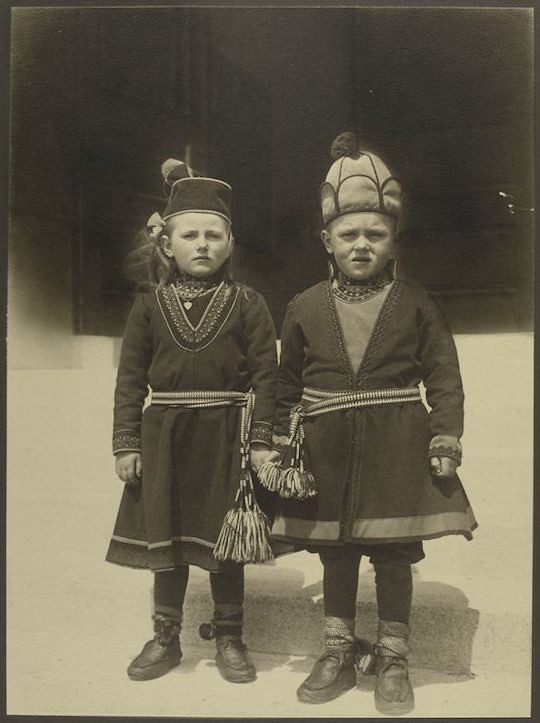

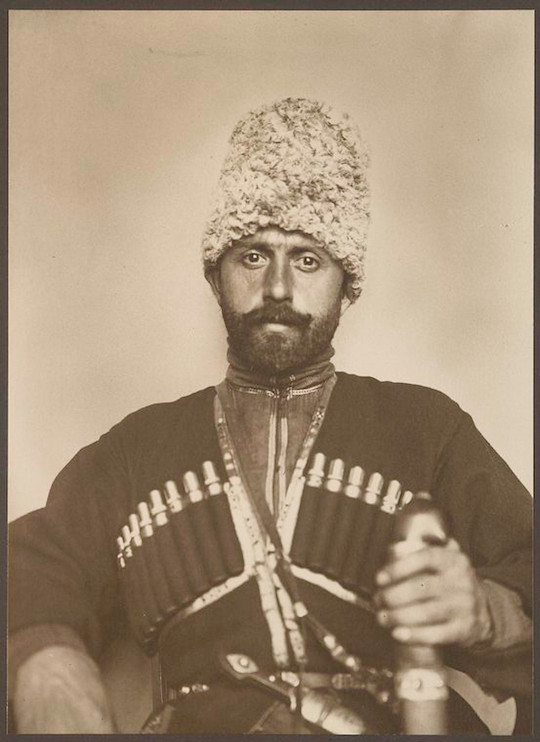
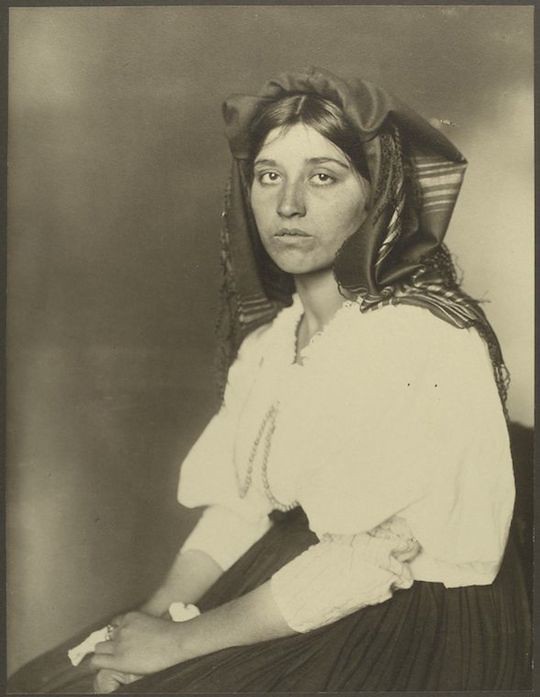
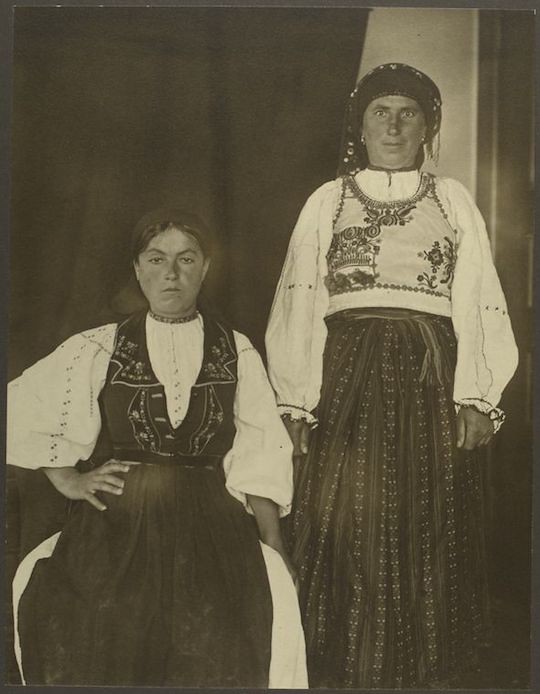

More photos:

A woman and children from Slovakia

A man from Russia

A woman from Italy

Women from Romania
On this website you can take a virtual tour of Ellis island and read about some of today's immigrants to the United States.
martes, 3 de noviembre de 2015
Immigrants and emigrants project
In Social Science we will be studying population. We are going to do a project about immigrants and emigrants. This is what you need to do:
Find out if anyone in your family has been an emigrant or immigrant at some time in his/her life. (If not, you can think of someone you know who is not in your family.) Ask these questions and make a poster (A4 size) with a photo or drawing of the person or country, a map, etc. You can also ask other things about their experience.
Averigua si alguien en tu familia ha sido emigrante o inmigrante en algún momento. (Si no hay nadie, podéis pensar en algún conocido, aunque no sea de la familia.) Hay que hacer estas preguntas y hacer un póster (tamaño folio) con alguna foto de la persona, el país, un mapa, etc. Si hay alguno que no podéis contestar, no pasa nada. También se puede preguntar otras cosas sobre su experiencia. Pongo la traducción, ya que a lo mejor tienes que hacer las preguntas en español (o en otra idioma!)
But, the poster has to be in English!
If no one in your family has emigrated to another country, perhaps somoene has left the village to live in a city, or moved to a different autonomous community. Let's see what you can discover!
Si nadie en la familia ha emigrado a otro país, a lo mejor se ha ido del pueblo para vivir en una ciudad, otra comunidad autónoma, etc. ¡A ver lo que podáis averiguar!
Name:___________________________________
Birthplace:________________________________ (país donde nació)
What country did he/she emigrate to?_______________________ (a qué país fue?)
When did he/she emigrate?_______________________________ (Cuándo?)
Why did he/she emigrate?________________________________(Por qué?)
Did the person return again to live in his/her birthplace?_________ (¿volvió a vivir en su país de origen?)
When and why?_________________________________________
What did he/she bring to the new country?_____________________ (¿qué se llevó consigo al país nuevo?)
What did he/she miss most?_________________________________ ¿Qué es lo que más echó de menos de su país de orígen?
What was the experience like?_______________________________ ¿Cómo fue su experiencia?
Find out if anyone in your family has been an emigrant or immigrant at some time in his/her life. (If not, you can think of someone you know who is not in your family.) Ask these questions and make a poster (A4 size) with a photo or drawing of the person or country, a map, etc. You can also ask other things about their experience.
Averigua si alguien en tu familia ha sido emigrante o inmigrante en algún momento. (Si no hay nadie, podéis pensar en algún conocido, aunque no sea de la familia.) Hay que hacer estas preguntas y hacer un póster (tamaño folio) con alguna foto de la persona, el país, un mapa, etc. Si hay alguno que no podéis contestar, no pasa nada. También se puede preguntar otras cosas sobre su experiencia. Pongo la traducción, ya que a lo mejor tienes que hacer las preguntas en español (o en otra idioma!)
But, the poster has to be in English!
If no one in your family has emigrated to another country, perhaps somoene has left the village to live in a city, or moved to a different autonomous community. Let's see what you can discover!
Si nadie en la familia ha emigrado a otro país, a lo mejor se ha ido del pueblo para vivir en una ciudad, otra comunidad autónoma, etc. ¡A ver lo que podáis averiguar!
Name:___________________________________
Birthplace:________________________________ (país donde nació)
What country did he/she emigrate to?_______________________ (a qué país fue?)
When did he/she emigrate?_______________________________ (Cuándo?)
Why did he/she emigrate?________________________________(Por qué?)
Did the person return again to live in his/her birthplace?_________ (¿volvió a vivir en su país de origen?)
When and why?_________________________________________
What did he/she bring to the new country?_____________________ (¿qué se llevó consigo al país nuevo?)
What did he/she miss most?_________________________________ ¿Qué es lo que más echó de menos de su país de orígen?
What was the experience like?_______________________________ ¿Cómo fue su experiencia?
Suscribirse a:
Comentarios (Atom)